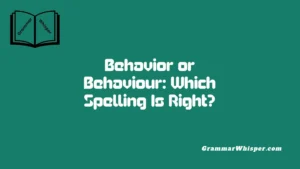You might’ve heard someone talking out of the side of their mouth and thought it sounded like a quirky saying. But this phrase is more than just an old-school line – it’s an idiom that captures the act of being two-faced or dishonest. It’s often phrased as talking out of both sides of your mouth, and it usually shows up when someone is saying different things to each audience. The goal? To please everyone without ever taking a firm stand. On the surface, that may seem smooth or diplomatic, but at its core, that kind of behavior lacks integrity. The expression lands a strong punch because it calls out hypocrisy in a way that’s instantly visual.
The origins of this idiom are fuzzy, but its meaning is clear – especially today. Picture a politician who makes promises to one group about cutting taxes, then turns around and supports a budget increase. Same person, same topic, opposite positions. That’s the very definition of contradictory speech. The context matters, of course, as do the people involved. I’ve seen this play out in team meetings, where leaders adjust their tones depending on who’s in the room. While the phrase might sound laid-back, it shines a light on actions that break trust – and that’s no small thing.
Understanding the Idiom: What Does It Mean?
The idiom means:
- Giving different advice or opinions about the same topic in different settings.
- Being insincere or two-faced, showing one attitude to one person and a different one to another.
For example:
“He tells his staff he supports flexible work, but tells investors he’ll cut remote options. He’s clearly talking out of both sides of his mouth.”
At first glance it might seem like harmless diplomacy – but more often than not it enters the territory of doublespeak and manipulation.
Origins and Evolution of the Phrase
A Mysterious Beginning
No one knows exactly where this idiom began. Unlike phrases with traced roots, this one remains unclear and elusive .
Some possible origins include:
- Biblical echoes: Proverbs mentions dishonesty, though without the idiom.
- Left vs. right symbolism: Historically, one side was seen as good, the other as evil – leading to metaphors about speaking from both moral “sides”.
Still, no definitive origin exists. What we know is that by the mid-20th century, the phrase had firmly entered American and British conversational English.
Linguistic Roots and Variants
The idiom thrives because of its vivid imagery:
| Element | Impact |
| “Side” of the mouth | Suggests hidden or muffled speech |
| “Both sides” | Implies duplicity or two-faced nature |
Related Idioms
- Double-talk
- Two-faced
- Doublespeak
- Try to have it both ways
These expressions live in the same semantic territory, reinforcing the core idea: you can’t say one thing to one side and something else to another without losing trust.
Deconstructing the Metaphor: Side-Talking Explained
Why “side of the mouth”? Think about people who cover their mouth when speaking – to whisper, to hide. That physical act mirrors an underlying intention: to conceal, to manipulate, to appear polite when you’re withholding truth.
In contrast, speaking straight on shows openness and honesty. So when someone talks out of the side of their mouth, they’re blending transparency with hidden agendas.
Everyday Contexts: Where This Idiom Shows Up
Personal Relationships
- Flattery mixed with hidden criticism.
- Over-promising to please, then disappointing later.
Example:
“She told her friend she loved her new haircut – even though she thought it was odd. That was classic side-mouth talk.”
Professional Situations
- Employers praising teamwork, then cutting benefits behind closed doors.
- Politicians shifting statements depending on the crowd.
Studies show inconsistent messages from leaders can damage team morale and public trust.
Double-Talk in Social Situations
Ever noticed someone praising your cooking, then criticizing your décor behind your back? That’s social double-talk – delivering compliments in person, then expressing entirely opposite opinions later. It’s a classic example of the idiom at work.
In Professional and Diplomatic Settings
This idiom (talking out of the side of one’s mouth) often appears in corporate politics and diplomatic circles where strategic ambiguity rules.
- Business: Managers giving contradictory assurances to employees and investors.
- Diplomacy: Leaders offering peace in public while negotiations stall in private.
This tactic can buy time – but at the cost of authenticity.
The Nuanced Art of Ingratiating Oneself
Sometimes people use side-of-mouth talk not out of deceit, but to fit in:
- Saying what others want to hear – without committing.
- Avoiding conflict by offering vague alignment.
That flexibility can look like honesty – but it’s often nothing more than passive manipulation.
Strategic Agreement and Social Survival
In social navigation, saying a little of everything can feel safe. Agreeing with every view prevents alienation. Still, over time it breaks down. You end up perceived as fickle, untrustworthy, lacking a moral compass.
Perceptions of Sincerity: When Flexibility Becomes Fickle
Where’s the line between tact and insincerity? It’s thin.
If you tailor your message to your audience without changing your core beliefs, you’re tactful. If you reshape your truth to please, you’re talking out of the side of your mouth – and trust erodes.
Case Studies: Real-Life Examples
Political Spins
- A leader promises to protect workers, then backs corporate tax cuts behind closed doors.
- Public: “We support unions!”
- Private memo: emphasize shareholder value first.
That’s classic side-mouth double-talk – and voters notice.
Corporate Contradictions
- A CEO tweets about climate goals, while internal docs reveal stalled green budgets.
- Manufactured smiles paired with hidden agendas: toxic workplace left behind.
Quotes That Show the Point
“He still hasn’t committed to anything and keeps talking out of both sides of his mouth.”
“Like many politicians, he’s speaking out of both sides of his mouth and I can’t trust him.”
These quotes hit home. They show how language shapes trust – or tears it down.
Behavioral Psychology Behind the Phrase
Why do people speak this way?
- Fear of conflict pushes us to please.
- Desire for advantage makes contradictory promises.
- Social reward systems encourage saying what listeners want to hear.
Understanding these roots helps us steer clear – or call it out.
Cultural & Ethical Implications
In many societies, avoiding offense is valued. But when adaptability turns into double-speak, ethics come into play. You’re no longer being tactful – you’re being deceptive.
Trust builds when words match intent.
Navigating with Integrity
Not everything is black and white. To avoid talking out of the side of your mouth:
- Clarify your values before entering a discussion.
- Commit only to what you mean – don’t hedge.
- Ask for clarity when others seem ambiguous.
- Align public and private messaging consistently.
That level of integrity creates trust – even when you tone down frustration or debate.
✅ Coming Up: More to Explore
This article maps out the full landscape. In upcoming sections, I’ll cover:
- Pop culture and real-life example breakdowns
- Advice: how to speak tactfully without talking out of the side of your mouth
- Modern misuse and clarifying common misinterpretations
- And of course, practical diagrams, tables, and actionable tools for building sincere communication
Final Thoughts
“Talking out of the side of your mouth” is more than just a colorful idiom – it’s a direct reflection of how words, intent, and integrity intersect in everyday communication. Whether in politics, relationships, business, or casual conversation, this expression exposes the gap between what’s said and what’s truly meant.
Understanding this idiom helps us recognize duplicity, navigate mixed signals, and protect our own credibility. In a world flooded with half-truths and calculated charm, clear and honest speech isn’t just refreshing – it’s powerful.
FAQs
What does “talking out of the side of your mouth” really mean?
It refers to speaking dishonestly or insincerely – usually by expressing one idea to one person while conveying the opposite to someone else. It often involves deception, manipulation, or trying to appease different parties without genuine conviction.
Is this idiom used in formal writing?
Not usually. The phrase is informal and more common in conversational English, journalism, or opinion pieces. In formal writing, you might use terms like “contradictory communication,” “insincerity,” or “duplicity” instead.
Is it the same as “talking out of both sides of your mouth”?
Yes, both phrases are used interchangeably. However, “talking out of both sides of your mouth” is slightly more common and emphasizes contradictory behavior more strongly.
How can I avoid doing this myself?
Be consistent. Align your private thoughts with your public speech. When you disagree or have doubts, express them tactfully, but don’t compromise your authentic voice just to please everyone.
Why does this phrase matter today?
In the age of media spin, political games, and curated social personas, being able to identify and avoid side-mouth speech is crucial. It builds trust, supports ethical decision-making, and helps you maintain credibility in every conversation.











